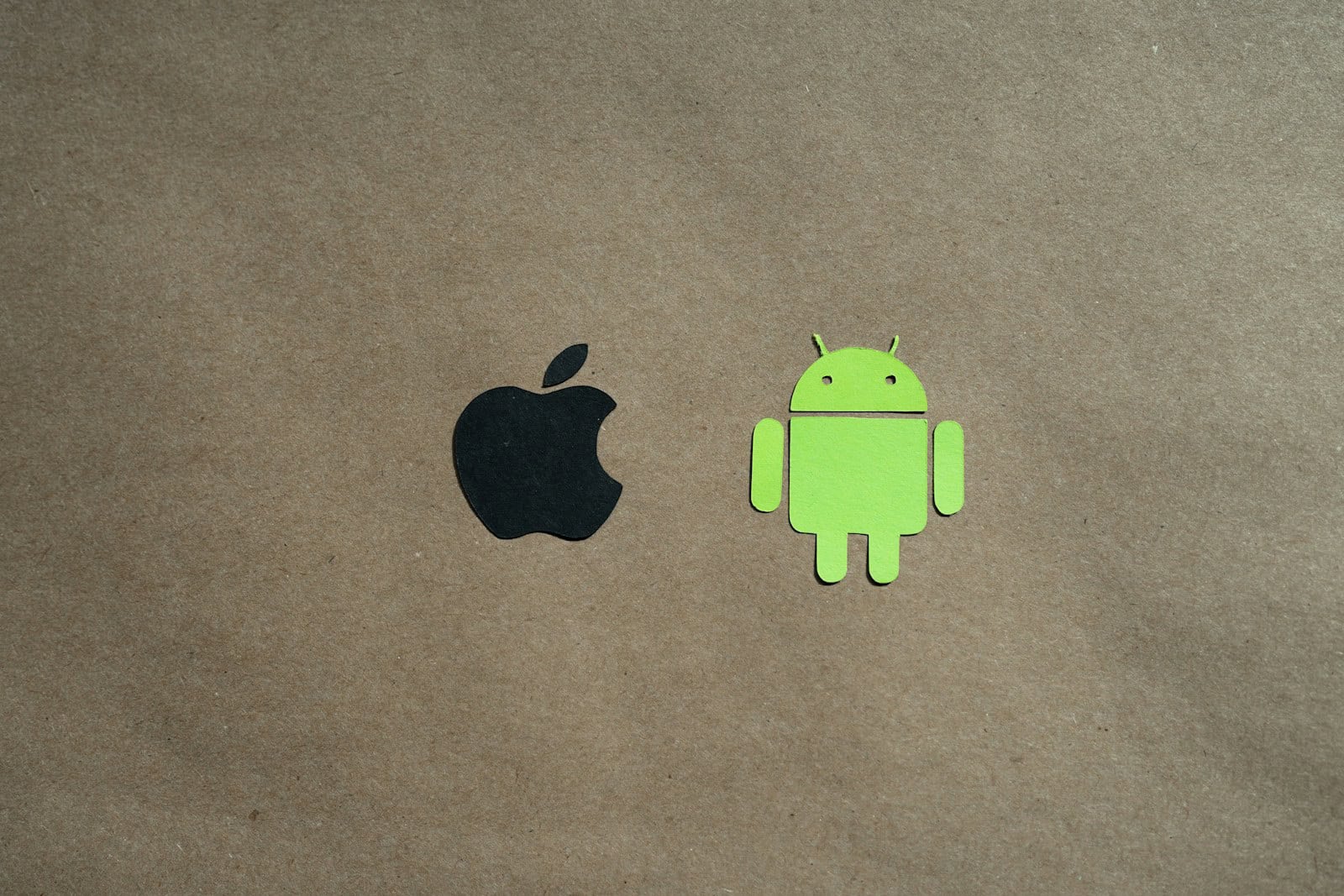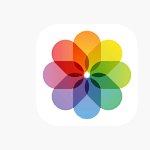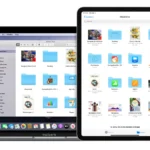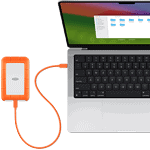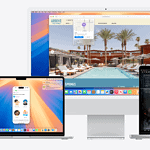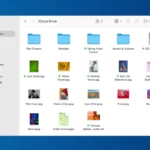Choosing between Android and iOS in 2025 is no longer just a matter of design preference or brand loyalty—it’s a decision that affects everything from your daily communication to app availability, AI integration, privacy, and even how your phone handles security threats.
Both platforms have evolved significantly over the past few years, borrowing from each other while staying true to their core philosophies. Here’s a comprehensive look at where Android and iOS stand in 2025, what’s changed, and what matters most for users today.
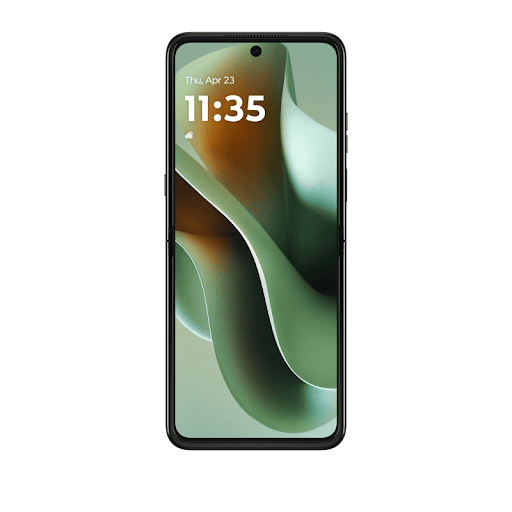
Market Share: A Tale of Two Worlds
- Global Dominance – Android Still Reigns Supreme
As of early 2025, Android holds about 72.2% of the global mobile OS market, maintaining its status as the world’s most used mobile platform. Its success is largely due to the vast range of devices across every price tier, particularly in regions like India, Brazil, and Southeast Asia. - U.S. Loyalty to iOS
In the United States, however, the script flips—Apple commands a 57.7% market share, thanks to strong brand loyalty, seamless device integration, and affluent user demographics. - Regional Nuances
Android dominates in fast-growing markets (95%+ in India), while iOS continues to excel in developed economies like the UK, Canada, and Japan. This division highlights how purchasing power, local preferences, and brand trust shape mobile adoption.

Design & Customization: Google’s Expressiveness vs Apple’s Simplicity
- Android’s “Material You” Gets Bolder
Android 14 and beyond have introduced a new “Material 3 Expressive” theme, leaning into bold colors, funky iconography, and deeper personalization. Users can now theme their phones around wallpapers, apply per-app color schemes, and even tweak animations. - iOS: Steady, Streamlined, and Subtly Adapting
Apple has gradually embraced more customization—widgets, App Library, lock screen personalization—but still prefers visual consistency and polish. The design language feels cohesive, and transitions are seamless across devices.
Security & Updates: Tight Control vs Fragmentation
- iOS: Controlled, Consistent, and Fast
Apple still leads in security updates, pushing major iOS updates to all compatible devices at once. Its walled garden approach, strict App Store rules, and advanced privacy features like on-device processing reinforce its reputation for keeping users safe. - Android: Catching Up But Still Fragmented
While Google has made strides with monthly security patches, initiatives like Project Treble, and Play Protect, Android still struggles with device fragmentation. Many users wait months—or never receive—major updates, depending on the manufacturer. - AI-Assisted App Stability
New data shows AI models like GPT-4o fix bugs more effectively on iOS (60% success) than on Android (49%), due to Apple’s uniform environment. For developers, iOS remains the preferred platform for first releases.

AI and Smart Features: Apple Intelligence vs Google’s AI-First Strategy
- Google’s AI Edge
Google was first to roll out real-time translation, smart replies, voice typing, and AI-enhanced photo tools. Pixel phones now come with the latest Tensor chips, which are designed specifically for AI tasks like call screening and real-time language interpretation. - Apple’s New AI Push – “Apple Intelligence”
In iOS 18, Apple introduced Apple Intelligence: a suite of writing tools, smart photo editing, and a revamped Siri that works contextually across apps. It’s Apple’s most serious foray into AI, aiming to catch up with Android’s head start.
Messaging & Interconnectivity: RCS Is Bridging the Gap
- Cross-Platform Messaging Finally Improves
After years of resistance, Apple is finally adopting RCS messaging with end-to-end encryption in 2025. That means iPhone and Android users can now send high-res images, typing indicators, and read receipts without reverting to SMS. It’s a major win for messaging parity.
Performance and Hardware: Silicon Wars
- iPhones: Still the King of Efficiency
Apple’s A17 and upcoming A18 chips continue to dominate in single-core performance and video rendering. Their tight hardware-software integration delivers superior battery life and heat management. - Android: Variety and Power
Android flagships using Qualcomm’s Snapdragon 8 Gen 3 and Samsung’s Exynos chips are finally rivaling Apple in multi-core tasks and GPU performance. Google’s Tensor chips also focus heavily on AI over raw horsepower.
App Ecosystem and Monetization
- iOS: Fewer Apps, More Money
The App Store has fewer total apps but generates more revenue. iPhone users spend more on in-app purchases and subscriptions, making iOS a more profitable platform for developers. - Android: More Open, More Options
Google Play has more apps and allows sideloading, giving users greater freedom. However, this openness can introduce risks if users aren’t cautious.
User Demographics & Buying Patterns
- iOS Users Tend to Be Younger, Wealthier
Studies in 2025 show iOS users have a 43% higher average income and skew younger, especially in the U.S., where Gen Z and Millennials dominate Apple’s user base. - Android Attracts a Broader Global Audience
Thanks to its flexibility, Android captures a larger user base across income levels, especially in emerging markets. From budget to premium devices, there’s an Android phone for almost everyone.
Which Should You Choose?
There’s no one-size-fits-all answer. If you want maximum customization, a wide selection of phones, and open access, Android is still king. But if you value consistent updates, high-end polish, tighter security, and better long-term support, iOS might be worth the premium.
In 2025, both platforms have never been closer in feature parity—and yet, they remain distinct in philosophy. Whether you go with Android or iOS, you’re not just buying a phone—you’re choosing an ecosystem. Make it count.
Key Takeaways
- Your ideal phone choice depends on whether you value customization (Android) or seamless experience (iOS).
- Both systems offer strong security, but they use different approaches to protect user data.
- The ecosystem you already use (Google or Apple) should influence your decision to avoid compatibility issues.
History and Evolution
Both Android and iOS have changed a lot since they first appeared. Their journeys show how mobile technology has grown to become what we use today.
Origin of Android
Android began as Android Inc., founded in 2003 by Andy Rubin, Rich Miner, Nick Sears, and Chris White. Google saw potential in the small company and acquired it in 2005.
The first commercial Android device, the HTC Dream (also known as the T-Mobile G1), hit the market in 2008. It featured a slide-out keyboard and a trackball for navigation.
Early Android versions were quite basic compared to today’s polished interface. The operating system was built on an open-source platform, which allowed different manufacturers to adapt it for their devices.
This open approach created a diverse ecosystem of phones with varying features and price points. Companies like Samsung, HTC, and Motorola could customize Android to fit their hardware.
Origin of iOS
Apple’s iOS journey started differently. It was first introduced as “iPhone OS” when Steve Jobs revealed the original iPhone in January 2007.
The first iPhone was a revolutionary device that combined a phone, internet communicator, and iPod into one product. It launched with iPhone OS in June 2007, featuring a touch-based interface that changed how people interacted with mobile devices.
Unlike Android, iOS was developed as a closed system exclusively for Apple’s hardware. This tight integration between software and hardware gave Apple complete control over the user experience.
The App Store launched in 2008 with the second version of iPhone OS, creating a new economy for mobile applications. This marketplace transformed phones into truly customizable devices.
Major Updates and Versions
Android has gone through many major versions, each named after desserts until Android 10. Key releases include:
- Android 2.0 (Eclair): Added Google Maps navigation
- Android 4.0 (Ice Cream Sandwich): Unified tablet and phone interfaces
- Android 5.0 (Lollipop): Introduced Material Design
- Android 10-15: Focused on privacy, security and AI features
Android is now on version 15, its latest release, continuing the evolution of Google’s mobile platform.
iOS has evolved through yearly updates. Notable versions include:
- iOS 4: Added multitasking
- iOS 7: Complete redesign with flat interface
- iOS 11: Redesigned App Store and Control Center
- iOS 14-16: Introduced widgets, App Library, and Focus modes
Each system has borrowed successful features from the other while maintaining their core philosophies. Android emphasizes customization and hardware variety, while iOS prioritizes simplicity and ecosystem integration.
Market Share and Demographics
The battle between Android and iOS shows clear patterns in who uses which system around the world. Both platforms have carved out specific territories and user groups based on factors like age, income, and location.
Global Market Share
Android dominates the global smartphone market with an impressive 71.42% share, while iOS holds about 27.93%. This significant gap shows Android’s widespread adoption across different price points and regions.
Android’s leadership stems from its presence on devices at various price points. From budget phones to premium flagships, Android offers options for every wallet size.
iOS maintains a smaller but steady portion of the market. Apple focuses on premium devices rather than competing across all price segments.
The market share hasn’t always looked this way. Both platforms have seen shifts over time, with Android gradually increasing its lead since 2009 as smartphone use spread globally.
User Demographics
Age plays a key role in platform preference. iPhones lead among 39-49 year olds in the US with a 48% share compared to Android’s 43%.
Income levels also affect choices. iPhone users typically have higher incomes, with many earning above $75,000 annually. Android users span a broader income range.
Education differences exist too. iPhone users often have college degrees, while Android appeals to a wider educational background range.
Many users express surprise at these numbers. Some iPhone users report feeling that “almost 90% of people they text use iPhones”, creating perception bubbles about which system is more popular.
Geographical Popularity
Regional preferences show clear patterns. In North America and particularly the US, iOS enjoys much higher usage than the global average.
Japan stands out as another strong iOS market. Cultural factors and brand perception drive Apple’s success there.
Europe shows mixed preferences. Western European countries like the UK have higher iOS adoption, while Eastern Europe favors Android.
Android dominates in developing markets like India, Africa, and parts of South America. The availability of affordable devices drives this trend.
China presents a unique case with strong Android usage but through heavily modified versions without Google services. Local manufacturers like Xiaomi and Huawei have captured large portions of this market.
Consumer loyalty varies by region too. US users show stronger brand loyalty, while price-conscious markets see more switching between platforms.
Operating System Capabilities
Both Android and iOS offer unique features that shape how users interact with their devices. These operating systems differ in their approach to design, customization, and accessibility tools that help users get the most from their phones.
User Interface and Experience
Android and iOS take different approaches to user interface design. iOS features a uniform grid of app icons on the home screen that’s consistent across Apple devices. This more uniform and consistent user interface makes it easy for users to switch between Apple products.
Android offers a more flexible home screen with widgets and customizable layouts. Users can place apps anywhere on multiple home screens and add useful widgets for quick information access.
Navigation also differs between the systems. iOS uses gestures for most navigation, with a swipe up from the bottom returning to the home screen. Android traditionally used three navigation buttons but now also supports gesture controls similar to iOS.
Both systems feature notification centers, but Android groups notifications more effectively and allows more user interaction directly from the notification shade.
Customization Options
Android excels in customization, allowing users to change almost every aspect of their experience. Users can install different launchers to completely change how their home screens look and work.
Android is more PC-like than iOS, with generally more customizable interface and features. Users can set default apps for email, web browsing, messaging, and other functions, giving them freedom to use the tools they prefer.
iOS has increased its customization options in recent years. Users can now add widgets to the home screen and change app icons through Shortcuts. However, Apple still limits what can be changed.
Android users can explore apps found outside the official store, while iOS users are mostly limited to apps from the App Store. This gives Android users more choices but can present security risks.
Accessibility Features
Both operating systems offer strong accessibility tools to help users with disabilities. Android provides TalkBack screen reader, Live Transcribe for real-time speech-to-text, and Voice Access for hands-free control.
iOS is known for excellent accessibility features like VoiceOver screen reader, Switch Control for those with limited mobility, and Magnifier to help users see small text. Apple’s tight hardware-software integration often makes these features work seamlessly.
Android’s open nature allows third-party developers to create specialized accessibility apps. Meanwhile, iOS offers features like Sound Recognition, which alerts users when certain sounds like alarms or doorbells are detected.
Both systems include options for display adjustment, text size changes, and color correction for users with visual impairments. They also offer voice control systems to navigate the phone hands-free.
Device Ecosystem
Both Android and iOS offer unique device ecosystems that shape how users interact with technology. The platforms differ significantly in hardware variety and how well their devices work together.
Variety of Devices
Android boasts an impressive range of devices from multiple manufacturers like Samsung, Google, Motorola, and Xiaomi. This variety means users can choose from different price points, from budget-friendly options under $200 to premium phones costing over $1,000.
Screen sizes range from compact 5-inch displays to large 7-inch phablets. Android devices also offer more hardware customization options. Many models still include headphone jacks, expandable storage via microSD cards, and various charging options.
App developers optimize apps better for iPhones due to the limited number of iOS devices compared to Android’s vast variety. This focused approach often results in more polished app experiences on iOS.
In contrast, Apple offers a smaller, more curated selection of devices. The iPhone lineup typically includes 4-5 current models with standardized features and consistent design language.
Integration with Other Devices
Apple excels at creating a tightly linked ecosystem. iPhones work seamlessly with other Apple products like MacBooks, iPads, Apple Watches, and AirPods. Features such as Handoff, Universal Clipboard, and AirDrop allow users to start tasks on one device and finish on another without interruption.
The Apple ecosystem creates a “walled garden” that works extremely well within itself but limits compatibility with non-Apple products. This integration is a key strength for many business users.
Android devices offer more flexible integration options. They connect well with Windows PCs, Chromebooks, smart TVs, and various wearables from different manufacturers. Google’s ecosystem allows more third-party device compatibility but may lack the polished integration of Apple’s approach.
Many Android manufacturers like Samsung have created their own mini-ecosystems with watches, earbuds, and laptops designed to work together smoothly.
Application Marketplace
The app stores for Android and iOS serve as digital storefronts where users download applications. These marketplaces differ in their approaches to app approval, revenue models, and developer tools.
App Store and Google Play Store Comparison
The Apple App Store uses a strict review process before apps go live. This approach focuses on quality control and security. Apps typically wait 24-48 hours for approval, with some taking longer if issues arise.
Google Play Store has a more open approach. The review process is faster, often taking just a few hours. This leads to quicker app launches but sometimes lower quality standards.
Revenue models differ too. Apple takes a 30% cut from app sales and in-app purchases, though this drops to 15% for small developers. Google follows a similar model but offers more flexibility with payment options.
User interfaces also vary. The App Store highlights curated content and editorial picks. Google Play organizes apps into clear categories with personalized recommendations based on previous downloads.
Number and Quality of Apps
Google Play Store hosts approximately 3.5 million apps compared to the App Store’s 2.2 million. This larger selection gives Android users more options, though quantity doesn’t always mean quality.
The App Store tends to have more high-quality paid apps. iOS users spend nearly twice as much on apps as Android users, making the platform attractive to premium app developers.
Android has more free apps with ads. This makes apps more accessible to users unwilling to pay upfront costs.
Apps often launch on iOS first due to:
- Less device fragmentation
- Higher average revenue per user
- More consistent development environment
However, Android’s market share (over 70% globally) means potentially larger audiences for successful apps.
Developer Support and Resources
Both platforms provide extensive tools for app creators. Apple offers Xcode, a comprehensive development environment that works exclusively on Mac systems. The Swift programming language makes iOS development more accessible.
Google provides Android Studio, which runs on Windows, Mac, and Linux. This cross-platform support lowers entry barriers for new developers.
Documentation quality is strong on both platforms. Apple’s resources are known for being thorough and well-organized. Google offers extensive online learning through Android Developers and Codelabs.
Developer fees differ significantly. Apple charges $99 annually, while Google requires a one-time $25 payment. This cost difference can matter for indie developers or small teams.
Both platforms offer analytics tools to track app performance, user engagement, and crash reports. Apple’s App Store Connect and Google’s Firebase help developers make data-driven improvements.
Security and Privacy
When choosing between Android and iOS, security and privacy features are major factors to consider. Both platforms take different approaches to protect users and their data, with distinct strengths in how they handle updates, built-in protections, and user privacy policies.
OS Built-in Security Features
iOS devices use a “walled garden” approach that gives Apple tight control over both hardware and software. This closed system helps iOS win the security race against Android. Apple’s App Store has stricter app review policies that reduce the chance of malware reaching users.
Android uses a sandboxing method to contain apps, but its open-source nature creates more security challenges. Google Play Protect scans apps for harmful behavior, but the platform’s flexibility allows users to install apps from third-party sources, increasing potential risks.
iOS uses hardware-based security with its Secure Enclave that stores fingerprints and facial recognition data. This adds an extra layer of protection that’s harder to breach.
Android has improved with features like Google Play System Updates that can patch security issues without full OS updates.
Privacy Policies
Apple markets privacy as a key selling point. They collect less user data and have implemented features like App Tracking Transparency, forcing apps to ask permission before tracking users across other apps and websites.
Google’s business model relies more on data collection, which affects Android’s privacy approach. While they’ve added more controls in recent versions, neither platform guarantees 100% privacy.
A recent study showed that iPhones send fewer requests to questionable places than Android devices, suggesting better privacy practices.
Both platforms offer privacy dashboards where users can see which apps use what permissions. iOS tends to provide more granular controls by default.
Frequency and Method of Security Updates
Apple’s control over hardware and software allows for quick, consistent security updates across supported devices. iOS devices typically receive 5+ years of security updates, even for older models.
Android’s update system varies widely by manufacturer. Google Pixel phones receive updates promptly, but other brands may delay updates by months or never deliver them for some models.
Android has improved this situation through:
- Project Mainline (modular updates through Play Store)
- Monthly security patches
- Partnerships with manufacturers to speed up deployment
iOS updates reach most users quickly. Within weeks of release, adoption rates often exceed 70% of compatible devices. Android’s fragmentation means update adoption is much slower, with many devices running outdated software.
Security-critical patches are typically released monthly for both platforms, but emergency fixes may come sooner for serious threats.
Performance and Optimization
iOS and Android take different approaches to performance optimization, with each system offering unique advantages. These differences stem from how they handle hardware integration, update cycles, and overall system management.
Hardware-Software Integration
Apple’s tight control over both hardware and software gives iOS a significant advantage in optimization. Because Apple designs its chips and operating system together, iOS devices often run more efficiently with less powerful hardware. This integration allows for smoother performance since the OS render loop is decoupled from the app.
Android faces more challenges due to its fragmented ecosystem. With numerous manufacturers creating devices with different specifications, Google must design Android to work across various hardware configurations.
This difference shows up in real-world use. iPhones often maintain smooth performance with less RAM than Android devices. For example, while flagship Android phones now pack 12GB+ of RAM, iPhones perform similarly well with 6GB.
Software Updates and Longevity
iOS devices typically receive software updates for 5-7 years, compared to 2-3 years for most Android phones. This longer support cycle helps iOS devices maintain performance over time.
Samsung and Google have recently improved by promising up to 7 years of updates for their newest phones, but this isn’t standard across all Android manufacturers.
Apple’s update system also works differently. When iOS updates roll out, they become available to all supported devices simultaneously. This approach helps maintain consistent performance across the user base.
Android updates often arrive at different times depending on the manufacturer. This staggered approach to software testing creates varied experiences for users.
Overall System Performance
Day-to-day performance differs between the platforms in noticeable ways. iOS is known for consistent animations and scrolling, while Android offers more customization options.
App performance often favors iOS. Despite Android having a much larger global market share, iOS generates about 90% of mobile app revenue. This financial incentive leads many developers to optimize for iOS first.
Testing shows significant differences in app performance between platforms. One analysis found an average difference of 393% when comparing attributed results across iOS and Android for the same apps.
Battery optimization also differs. iOS takes a more restrictive approach to background processes, which helps preserve battery life but limits multitasking. Android allows more background activity but may consume more power as a result.
Business Models and Revenue
Apple and Google use different strategies to make money from their mobile operating systems. These approaches affect app pricing, developer fees, and how each company earns from their smartphone ecosystems.
Profit Strategies
Apple follows a premium hardware model, making most of its money from device sales. iPhones are priced higher than many Android devices, often exceeding $1,000 for recent models. This pricing strategy targets higher-income customers, with iPhone users having an average annual salary of $53,251 compared to $37,040 for Android users.
Google takes a different path. It offers Android as an open-source platform to many manufacturers. Google makes money through:
- Advertising revenue
- Google Play Store fees
- Data collection for targeted ads
- Google services pre-installed on devices
This explains why Android has a 71.42% global market share while iOS has 27.93%. Android’s wider reach helps Google collect more user data.
Revenue from App Sales and Services
Despite having a smaller market share, iOS generates more app revenue. Apple’s App Store brings in significantly more money than Google Play even with fewer users. Studies show iOS has an average revenue per user of $4.60, much higher than Android.
Why this difference? Several factors contribute:
- iPhone users typically have higher disposable income
- iOS users show more willingness to pay for apps and subscriptions
- Apple’s ecosystem creates stronger user loyalty
- Better in-app purchase conversion rates on iOS
For businesses developing mobile apps, this creates an interesting choice. Android offers larger market reach, while iOS provides better monetization opportunities. Many companies launch on iOS first to generate revenue before expanding to Android.
Legal and Ethical Considerations
Both Android and iOS platforms face complex legal and ethical challenges that affect users, developers, and the companies themselves. These issues impact how apps are developed, distributed, and how user data is managed.
Data Handling and Usage Policies
Privacy policies differ significantly between Android and iOS. Apple has positioned itself as a privacy-focused company, requiring apps to get explicit permission before tracking users across other apps and websites. Their App Tracking Transparency feature gives users more control over their data.
Android’s approach has historically been more open. Google collects more user data by default, though they’ve added more privacy controls in recent versions. Developers must clearly state what data they collect in the Google Play Store’s Data Safety section.
Both platforms must comply with laws like GDPR in Europe and CCPA in California. These laws require apps to:
- Get clear consent for data collection
- Allow users to delete their data
- Provide ways to opt out of data sharing
Developers on either platform must address legal requirements for mobile apps including proper privacy policies and secure data storage methods.
Antitrust Issues
Both Apple and Google face growing antitrust scrutiny worldwide. Apple’s App Store policies have been criticized for the 30% commission on all transactions and requiring developers to use their payment system.
The Epic Games lawsuit highlighted these issues when Fortnite was removed from both stores for bypassing payment systems. This case revealed how much control these companies have over their app ecosystems.
Google faces similar challenges regarding Android’s dominance and default app settings. The company has been accused of using Android to maintain its search engine monopoly.
Regulatory bodies in the EU, US, and other regions are investigating whether these practices limit competition. New legislation may force both companies to:
- Allow alternative app stores
- Reduce commission rates
- Permit different payment methods
- Stop giving preference to their own apps
These antitrust concerns may reshape how both operating systems function in the coming years.
Frequently Asked Questions
Android and iOS offer different features, security levels, and user experiences. Each system has strengths that appeal to different types of users based on their needs and preferences.
What are the advantages of using Android over iOS?
Android provides more customization options and flexibility for users who want to personalize their devices. You can change almost everything from home screens to default apps.
Android phones come in many price ranges, making them more affordable for different budgets. This variety gives consumers more choices when shopping for a new phone.
The Google Play Store has fewer restrictions for app developers, which can lead to more innovative and experimental apps. This open approach appeals to users who value freedom in their mobile experience.
What are the benefits of choosing iOS over iOS?
iOS offers greater stability and simplicity in its user interface. Things typically work smoothly without much tweaking needed.
Apple’s ecosystem provides seamless integration between devices like iPhones, iPads, and Macs. This connectivity makes transferring files and continuing tasks across devices easy.
iOS has stronger security features and more strict app store reviews. These protections help keep user data safer from malware and privacy breaches.
How does the market share of Android and iOS compare?
Android dominates the global smartphone market with roughly 70% share, while iOS holds about 30%. This gap exists because Android runs on devices from many manufacturers.
In the United States and other wealthy nations, iOS has a much stronger presence. Apple enjoys higher market share in countries with higher average incomes.
The business model difference is significant – Google makes Android available to many manufacturers, while Apple keeps iOS exclusive to its own devices.
What are the most significant differences between iOS and Android devices?
The look, feel, and feature sets differ greatly between iOS and Android. iOS uses a grid of app icons, while Android offers widgets and more home screen options.
Hardware variety sets them apart—Apple makes all iOS devices, ensuring consistent quality but limited choices. Android runs on phones from Samsung, Google, Motorola, and many others.
App development approaches differ between platforms. Developers use different programming languages and tools—Swift for iOS and Kotlin or Java for Android.
What could be considered disadvantages of using iOS compared to Android?
iOS limits customization options, forcing users to accept Apple’s vision of how things should work. You cannot easily change default apps or modify core system features.
Apple devices typically cost more than comparable Android phones. The “Apple tax” makes iPhones less accessible to budget-conscious consumers.
iOS restricts sideloading apps (installing from outside the App Store), which limits access to certain tools and applications. This walled garden approach frustrates users who want complete control.
Looking at current trends, how might the iOS versus Android landscape change by 2024?
Privacy features will likely become even more important, with Apple continuing to position iOS as the privacy-focused choice. Google will need to address these concerns in Android to stay competitive.
Artificial intelligence integration will advance on both platforms, with Google leveraging its AI expertise for Android and Apple developing on-device solutions for iOS.
Foldable devices may shift market dynamics, as Android manufacturers have taken the lead in this category. Apple might need to respond with its own foldable device to maintain market position.

